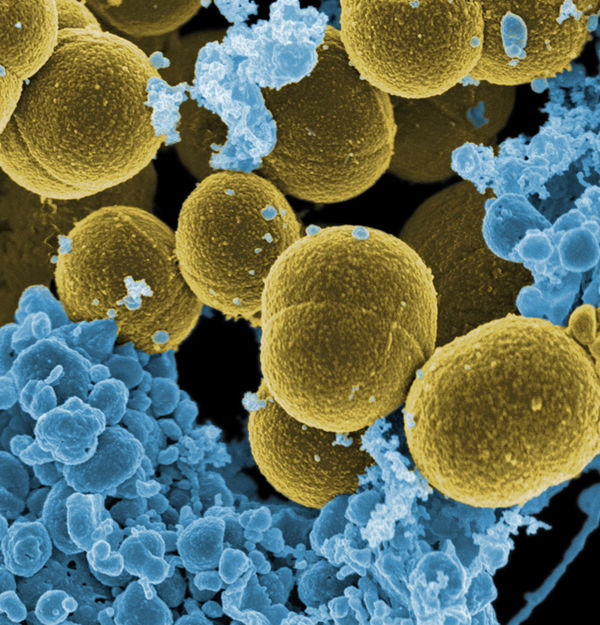Our cells have to distinguish between foreign cells and the cells from our own body, but they also have to distinguish between friendly microbes and pathogens that will harm us. A recent study from UC Davis has found that a previously studied protein has much more to offer than we thought.
“We have to ignore those beneficial microbes yet be ready for an actual infection at the same time,” said professor Andreas Bäumler, vice chair of research at the UC Davis Genome and Biomedical Sciences Facility and lead author of the study.
Our body contains more bacterial cells than human cells. These microbes, mostly found in the digestive tract, are beneficial and very important to our bodies’ routine functions. However, these helpful bacteria have relatives that can seriously damage us.
These pathogens (harmful bacteria) are detected when they infect our cells. Like an alarm, this intrusion causes the body to send off proteins that mobilize our immune response. Better understanding of our immune response can lead to better ways of combating pathogens and treating inflammatory disorders.
Digestive bacteria in our body are satisfied with just colonizing the intestines. They help to break down our food and benefit by having a good source of nutrients available to them. But their more aggressive relatives will break into our cells to survive.
“The microbes are supposed to stay in the lumen (inside intestines), but salmonella is a pathogen and will force its way into the tissue,” Bäumler said.
Salmonella, the pathogen featured in this study, infects our cells by activating enzymes on the cell membrane that rearrange the actin in the cell’s cytoskeleton. It does this by using a secretion system to inject pathogenic proteins into the cell, like a syringe. The process that allows salmonella to infect our cells also alerts our body to the intrusion.
Salmonella was used to see how the immune system differentiates between the infecting salmonella and other harmless bacteria. Salmonella uses a protein called SopE (Salmonella outer protein E) to rearrange our cell membranes and gain access.
When Salmonella injects SopE into our cells, SopE activates human GTPase enzymes RAC1 and CDC42 (signalling proteins involved in cell division) which then break down the surrounding actin, allowing the bacterium inside. However, by activating the GTPase enzymes, salmonella also activates a protein called NOD1 that sounds the alarm once it has detected the pathogenic nature of the attack. NOD1 then signals other proteins, such as RIP2, signifying that the cell is in danger. In the end, NF-κB is signaled, attaches to our DNA and initiates the immune response by attracting white blood cells to the area.
What is surprising about NOD1 is that, before this study, it had been so thoroughly studied that no one had expected it to play a significant role in alerting the hibernating immune system that our cells were under attack.
These proteins were identified with help from the UC Davis Genome Center.
“Samples were brought to me in the UC Davis Genome Center for sequence analysis. I made a slight assist in the sample preparation methodology, in order to get better results for the interacting proteins,” said Richard Eigenheer, a researcher in the study from the Proteomics Core Facility and the UC Davis Genome Center.
The genes activated by these proteins are an integral part of the human immune response and are related to inflammation and other immune functions like producing neutrophils, a type of white blood cell.
“Some of the genes that are transcribed are cytokines or chemokines that attract macrophages or neutrophils to the site of infection. This helps the host to clear the infection,” said Marijke Keestra, the assistant project scientist for the study.
Besides allowing us to further understand how our immune system is activated, NOD1 allows us to find new targets to combat inflammatory diseases including arthritis, sepsis and inflammatory bowel disease.
For these medical conditions, the NOD1 signal cascade is known to be a major part of the immune response, but by better understanding the pathways required to activate it, we can learn how to control these responses and make them more effective at keeping our system healthy.
KELLY MITCHELL can be reached at science@theaggie.org.






…Websites you should visit…
[…]you make blogging glance[…]…